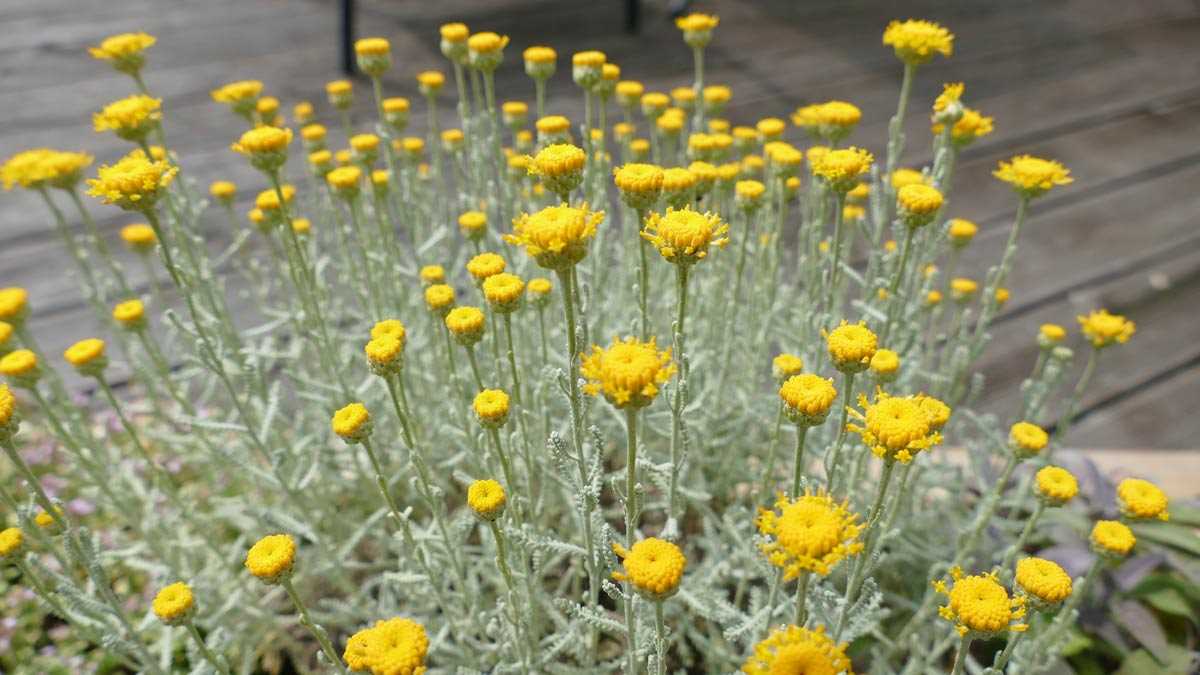- Choosing the Right Location
- Soil Preparation and Planting
- 1. Choose a well-draining soil
- 2. Clear the area
- 3. Amend the soil
- 4. Test the soil pH
- 5. Dig the planting holes
- 6. Plant the Santolina
- 7. Water thoroughly
- 8. Mulch around the plants
- 9. Provide regular water
- 10. Monitor and maintain
- Watering and Drainage
- Pruning and Shaping
- When to Prune
- How to Prune
- Pruning Tips
- Shaping Santolina
- Cautions
- Fertilizing and Mulching
- Fertilizing
- Mulching
- Pest and Disease Control
- Pest Prevention
- Common Pests
- Disease Control
- Overwintering and Protection
- 1. Mulching
- 2. Pruning
- 3. Shelter
- 4. Watering
- 5. Growing in Containers
- Propagation Techniques
- 1. Seeds
- 2. Stem Cuttings
- 3. Division
- Questions and Answers:
- Can Santolina be grown in containers?
- What is the best time to prune Santolina?
- Does Santolina require a lot of water?
- How often should I fertilize Santolina?
- What is the ideal growing conditions for Santolina?
- Can Santolina be used for medicinal purposes?
- How do I propagate Santolina?
- Videos: Gardening Basic Tips 01/ How to start gardening/ Choose right plants for your house #beginner #plant
Looking to add some vibrant color and unique texture to your garden? Santolina, also known as cotton lavender, is a popular choice for many garden enthusiasts. Known for its beautiful silver-grey foliage and tiny, button-shaped yellow flowers, Santolina can provide a stunning contrast to other plants in your garden.
Cultivating Santolina is relatively easy, making it a great option for both beginner and experienced gardeners. This hardy perennial thrives in dry and sunny conditions, making it ideal for Mediterranean and coastal gardens. It is also deer-resistant, drought-tolerant, and low-maintenance, making it especially attractive to those looking for fuss-free plants.
To successfully grow Santolina in your garden, it is important to provide it with well-draining soil and full sun exposure. Avoid over-watering, as the plant is susceptible to root rot. Pruning is also essential to maintain its compact shape and encourage healthy growth. Additionally, regular deadheading will promote continued blooming throughout the summer months.
Whether you’re looking to create a rock garden, border, or simply add some visual interest to your landscape, Santolina can be a versatile and eye-catching addition. Its unique foliage and vibrant flowers will surely make a statement and enhance the overall beauty of your garden.
Choosing the Right Location
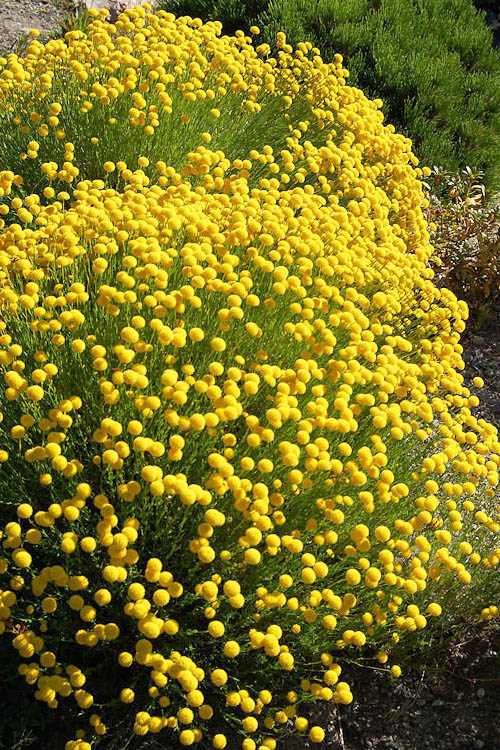
When growing santolina in your garden, it is essential to choose the right location that meets its requirements. Here are some factors to consider:
- Sunlight: Santolina thrives in full sun, so it is crucial to select a spot that receives at least 6 to 8 hours of direct sunlight per day.
- Soil: This plant prefers well-draining soil with a pH level between 6.5 and 7.5. Sandy or loamy soil is ideal, as it prevents waterlogging.
- Temperature: Santolina is tolerant of a wide range of temperatures but prefers a Mediterranean-like climate. It can handle hot summers and mild winters but may struggle in extremely cold or humid environments.
- Wind: Consider the wind conditions in your garden. Strong winds can damage santolina, so it is best to choose a location that offers some protection, such as near a fence or wall.
Additionally, it is crucial to provide enough space for the plant to grow. Santolina can spread up to 2 feet wide and 2 feet tall, so make sure to allocate adequate space between each plant to allow for proper air circulation.
By choosing the right location for your santolina plants, you can ensure optimal growth and a healthy garden. Remember to consider sunlight, soil, temperature, and wind conditions when selecting the perfect spot!
Soil Preparation and Planting
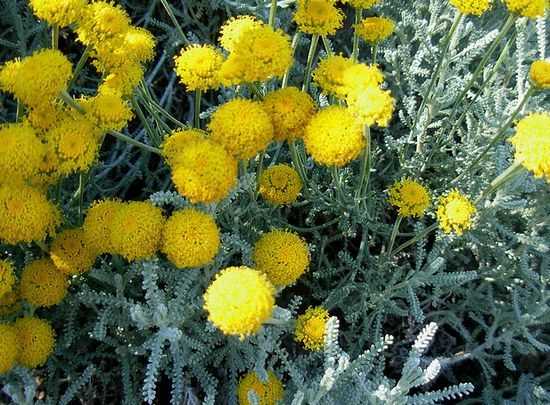
Before planting Santolina, it is important to prepare the soil properly to ensure healthy growth and blooming. Here are some steps for soil preparation and planting:
1. Choose a well-draining soil
Santolina prefers well-drained soil, so it is important to choose a planting location with soil that does not retain excessive moisture. Heavy clay soil can be amended with organic matter or sand to improve drainage.
2. Clear the area
Clear the planting area of any weeds, grass, or debris. This will prevent competition for nutrients and sunlight.
3. Amend the soil
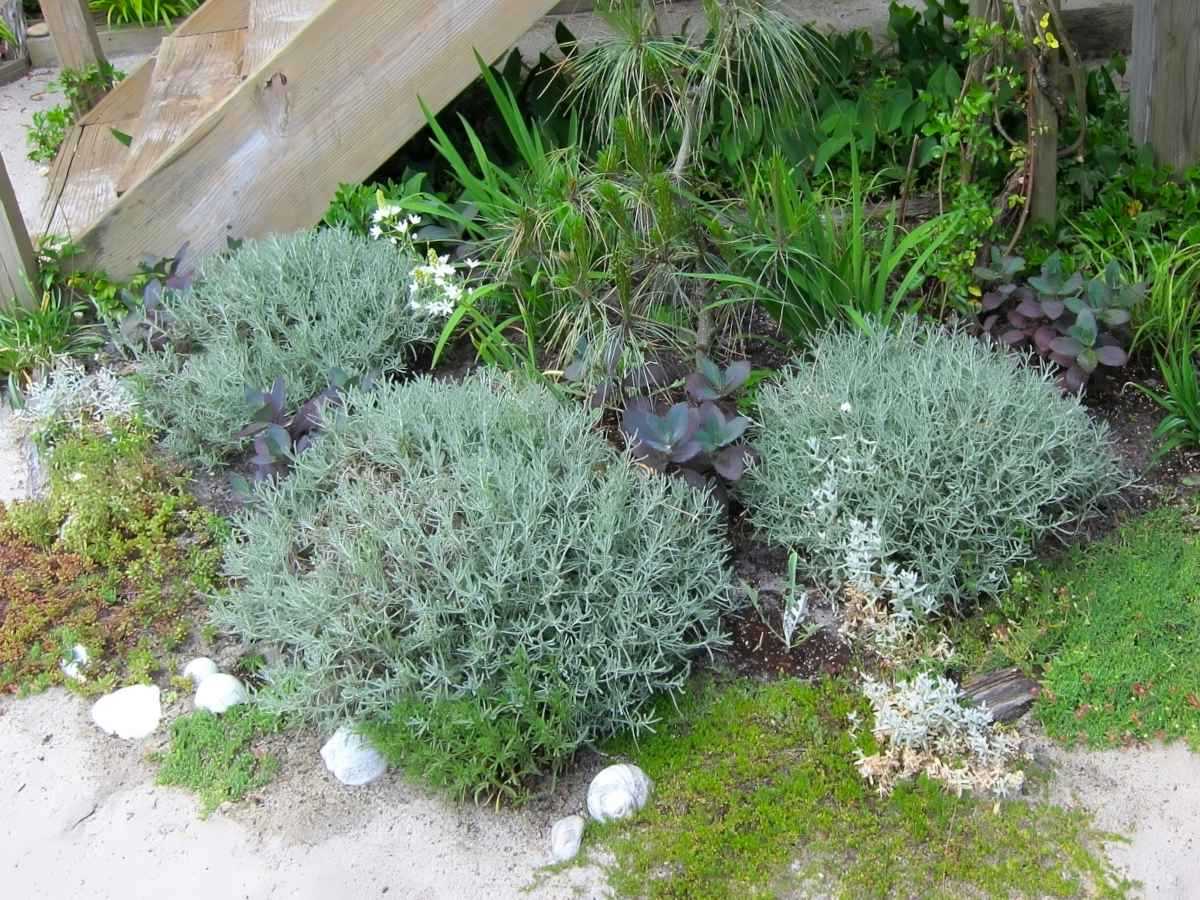
Add compost or well-rotted manure to improve the fertility and texture of the soil. Work the amendment into the top 6-8 inches of soil using a garden fork or tiller.
4. Test the soil pH
It is a good idea to test the soil pH before planting Santolina. It prefers slightly alkaline soil with a pH between 6.5 and 7.5. If the soil is too acidic, add lime to raise the pH.
5. Dig the planting holes
Dig holes that are slightly larger than the root ball of the Santolina plant. Space the holes about 12-18 inches apart, depending on the desired density of the planting.
6. Plant the Santolina
Place the Santolina plant into the hole, making sure that the top of the root ball is level with the surrounding soil. Backfill the hole with soil and gently firm it around the plant.
7. Water thoroughly
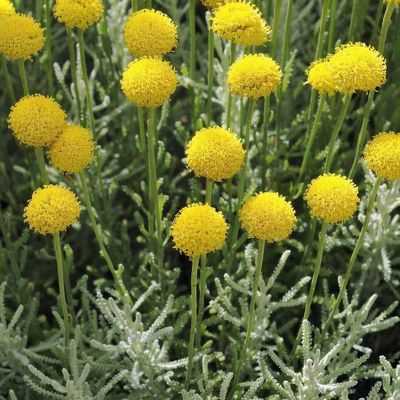
After planting, water the Santolina thoroughly to settle the soil and remove any air pockets around the roots.
8. Mulch around the plants
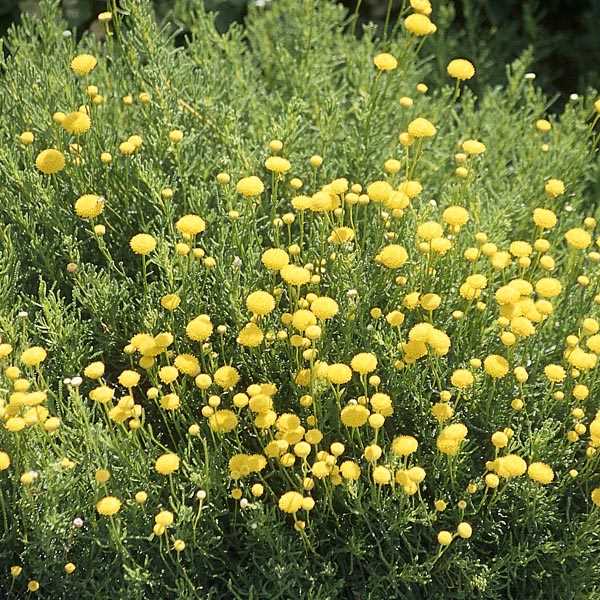
Apply a layer of mulch around the plants to help conserve moisture and suppress weed growth. Keep the mulch a few inches away from the stems to prevent moisture-related diseases.
9. Provide regular water
While Santolina is drought-tolerant once established, it is important to provide regular water during the first growing season to promote healthy root development. Water deeply but infrequently to encourage deep root growth.
10. Monitor and maintain
Monitor the plants for pests, diseases, and signs of stress. Prune the plants in early spring to maintain a compact, tidy shape. Replace any dead or damaged plants as needed.
By following these soil preparation and planting steps, you can create an ideal growing environment for Santolina in your garden.
Watering and Drainage
Proper watering is essential for the health of santolina plants. While these plants are drought-tolerant, they still require regular watering, especially during dry spells or prolonged heatwaves. Here are some tips for watering santolina:
- Water deeply: When watering your santolina, make sure to water deeply, so the water reaches the plant’s roots. This promotes strong root growth and helps the plant withstand drought conditions.
- Allow for drying: After watering, allow the top few inches of soil to dry out before watering again. Santolina plants prefer soil that is slightly dry rather than constantly wet.
- Avoid overwatering: Overwatering can lead to root rot and other diseases. Make sure the soil is well-draining to prevent waterlogging and always check the moisture level before watering.
- Water in the morning: It is best to water santolina in the morning, allowing the leaves to dry before evening. Watering in the evening can increase the risk of fungal diseases.
In addition to proper watering, good drainage is crucial for the health of santolina plants. Here’s how to ensure adequate drainage:
- Choose well-draining soil: Santolina plants thrive in sandy or loamy soil that drains well. Avoid heavy clay soils that retain water and may lead to root rot.
- Improve drainage: If you have heavy soil or poor drainage, you can amend it by adding organic matter such as compost or sand to improve the soil structure and drainage capacity.
- Avoid waterlogged areas: Plant your santolina in a location where water doesn’t pool or sit for extended periods. If necessary, consider building raised beds or mounds to promote better drainage.
By following these watering and drainage tips, you can ensure the health and vitality of your santolina plants.
Pruning and Shaping
Pruning is an essential part of maintaining the shape and health of your santolina plants. Regular pruning helps to promote bushy growth and prevent the plant from becoming leggy or woody. It also helps to maintain the desired size and shape of the plant.
When to Prune
The best time to prune santolina is in late winter or early spring, before new growth begins. This allows the plant to recover quickly and encourages vigorous growth during the upcoming growing season.
It’s also a good idea to lightly prune your santolina after it finishes flowering in summer. This helps to tidy up the plant and remove any dead or faded flowers.
How to Prune
To prune santolina, start by removing any dead or damaged branches. Use sharp pruning shears or scissors to make clean, angled cuts just above a leaf or bud. Avoid cutting too close to the main stem, as this can damage the plant.
If you’re looking to shape your santolina into a specific form, such as a ball or a hedge, make sure to prune regularly throughout the growing season. Trim back any long or straggly branches to maintain the desired shape.
Pruning Tips
- Always use clean and sharp pruning tools to prevent the spread of disease.
- Remove any branches or leaves that are touching the ground, as this can lead to rot or disease.
- When pruning, try to maintain a balanced and symmetrical shape for your santolina plant.
- Don’t prune more than one-third of the plant’s total growth in a single pruning session, as this can stress the plant.
- After pruning, make sure to water your santolina thoroughly to help it recover and promote new growth.
Shaping Santolina
Santolina can be shaped into various forms, depending on your preference and garden design. Some common shapes include balls, cones, and hedges. To shape your santolina, follow these steps:
- Start by pruning away any dead or damaged branches.
- Next, remove any branches that are growing in the wrong direction or obstructing the desired shape.
- Trim back any long or straggly branches to maintain the desired shape.
- Regularly prune throughout the growing season to keep the shape in check.
Cautions
While santolina is generally a hardy and low-maintenance plant, it’s important to avoid over-pruning, as this can weaken the plant and make it more susceptible to disease. Additionally, take care not to prune during exceptionally hot or cold weather, as this can stress the plant.
Always consult specific pruning guidelines for your santolina variety, as different varieties may have slightly different needs. With a little care and attention, your santolina plants will thrive and add beauty to your garden for years to come!
Fertilizing and Mulching
Santolina plants are generally low-maintenance and do not require heavy fertilization. However, providing them with some nutrients can help improve their overall health and appearance.
Fertilizing
When it comes to fertilizing santolina, it is best to apply a slow-release fertilizer in early spring. This will provide a steady supply of nutrients to the plant throughout the growing season. You can also use a liquid fertilizer every four to six weeks during the growing season to boost the plant’s growth.
It is important to avoid over-fertilizing santolina, as this can lead to excessive foliage growth and fewer flowers. Always follow the instructions on the fertilizer packaging and apply the recommended amount for the size and age of your santolina plant.
Mulching
Mulching is an important practice in santolina care, as it helps conserve moisture, suppress weeds, and regulate soil temperature. When mulching your santolina, it is best to use organic materials such as straw, wood chips, or compost.
Apply a layer of mulch around the base of the plant, making sure to leave a small space around the stem to prevent stem rot. The mulch layer should be around 2-3 inches thick. Replenish the mulch layer as needed, especially during hot and dry weather, to help retain moisture in the soil.
Avoid piling the mulch too close to the crown of the plant, as this can create a damp environment and encourage fungal diseases. Maintaining a proper mulch layer will not only benefit the santolina plant but also improve the overall aesthetics of your garden.
Pest and Disease Control
Pest Prevention

Preventing pest infestations is the first step in pest control for Santolina plants. Here are a few tips to keep pests away:
- Choose healthy plants from reputable sources to avoid introducing pests to your garden.
- Keep your garden clean and tidy by removing dead plant material and debris where pests can hide.
- Practice good garden hygiene by regularly sanitizing your gardening tools to prevent the spread of pests.
- Inspect your plants regularly for any signs of pests and take appropriate action if necessary.
Common Pests
While Santolina plants are generally resistant to pests, there are a few common pests that may still affect them:
Pest Description Treatment Aphids Small, soft-bodied insects that feed on plant sap and excrete a sticky substance called honeydew. Use insecticidal soap or a strong jet of water to remove aphids from the plants. Spider mites Tiny, spider-like pests that suck plant juices, causing yellowing and stippling of leaves. Apply neem oil or insecticidal soap to control spider mite infestations. Snails and slugs Mollusks that feed on plant foliage, leaving irregular holes and slime trails behind. Set up barriers such as copper tape or use organic slug and snail baits to control their population. Disease Control
Santolina plants are generally disease-resistant, but they can occasionally suffer from fungal diseases or other plant disorders. Here are a few tips to prevent and control diseases:
- Plant Santolina in well-draining soil to prevent root rot and other fungal diseases.
- Avoid overhead watering, as wet foliage can promote the development of fungal diseases.
- Remove and destroy any infected plant material to prevent the spread of diseases.
- Apply organic fungicides according to the instructions on the package if necessary.
Overwintering and Protection
Since santolina is native to warm Mediterranean climates, it is not cold hardy and will typically not survive freezing temperatures. However, with proper care and protection, you can help your santolina plants survive the winter months.
1. Mulching
Applying a layer of mulch around the base of your santolina plants can help insulate the roots and protect them from freezing temperatures. Use a thick layer of organic mulch, such as straw or wood chips, and spread it out evenly. This will also help prevent weed growth and retain moisture in the soil.
2. Pruning
Before winter sets in, prune your santolina plants to remove any dead or damaged branches. This will not only help tidy up the appearance of the plants but also reduce the risk of disease and pests overwintering in the foliage.
3. Shelter
Providing some form of shelter or protection can greatly increase the chances of your santolina plants surviving the winter. You can use various methods to create a microclimate for your plants, such as:
- Building a temporary cold frame or greenhouse around the plants
- Using frost blankets or cloths to cover the plants during cold nights
- Planting them near a south-facing wall or structure that can provide some warmth and wind protection
4. Watering
During the winter months, reduce the frequency of watering your santolina plants. Overwatering can lead to root rot in cold, wet conditions. However, make sure the soil doesn’t completely dry out, as the plants still need some moisture to survive.
5. Growing in Containers
If you live in a climate with harsh winters, consider growing santolina in containers that can be brought indoors during the coldest months. Place the containers in a cool and well-lit location, such as a south-facing window, and keep the soil slightly moist. Monitor the plants for signs of pests or diseases, as indoor conditions can sometimes promote their growth.
Following these tips can help your santolina plants survive the winter and thrive in your garden for years to come. Remember to monitor the weather conditions in your area and provide appropriate care based on the specific needs of your plants.
Propagation Techniques
There are several propagation techniques that can be used to grow new santolina plants:
1. Seeds
Santolina can be grown from seeds, which can be collected from mature plants or purchased from a reputable seed supplier.
- Sow the seeds in well-draining soil, either directly in the garden or in seed trays.
- Keep the soil consistently moist until the seeds germinate, which usually takes 1-2 weeks.
- Transplant the seedlings into larger pots or into the garden once they have developed a few sets of true leaves.
2. Stem Cuttings
Santolina can also be propagated from stem cuttings, which is a quick and easy way to increase your plant collection:
- Select a healthy stem from the parent plant, ideally one that is not flowering.
- Make a clean cut just below a leaf node, using a sharp and sterilized knife or pruning shears.
- Remove the leaves from the bottom half of the cutting, and dip the cut end in a rooting hormone powder.
- Plant the cutting in a well-draining soil mix, and keep it consistently moist until roots develop.
- Transplant the rooted cutting into a larger pot or into the garden once the roots are well-established.
3. Division
Santolina plants can also be propagated through division, which involves separating the rootball into smaller sections:
- Carefully dig up the plant, trying to preserve as much of the root system as possible.
- Using a sharp and sterilized knife or shovel, divide the rootball into smaller sections, ensuring that each section has a good amount of roots and foliage.
- Replant the divided sections in their desired locations, making sure to water them well.
By utilizing these propagation techniques, you can easily cultivate and expand your santolina collection in your garden.
Questions and Answers:
Can Santolina be grown in containers?
Yes, Santolina can be grown in containers as long as they have good drainage and are filled with well-draining soil. Make sure to choose a large enough container to accommodate the plant’s root system.
What is the best time to prune Santolina?
The best time to prune Santolina is in spring, just before new growth starts. This will help maintain the plant’s shape and encourage fresh growth. Avoid pruning in late fall or winter, as this can leave the plant susceptible to cold damage.
Does Santolina require a lot of water?
No, Santolina is a drought-tolerant plant and does not require a lot of water once established. It prefers well-draining soil and should be watered sparingly. Overwatering can lead to root rot and other issues.
How often should I fertilize Santolina?
Santolina is not a very heavy feeder and does not require frequent fertilization. You can apply a slow-release, balanced fertilizer in early spring and then again in early summer. Avoid fertilizing in late summer or fall, as this can disrupt the plant’s natural growth cycle.
What is the ideal growing conditions for Santolina?
Santolina thrives in full sun and well-draining soil. It is tolerant of poor soil conditions and can even grow in sandy or rocky soils. It prefers a slightly alkaline soil pH and does not tolerate wet feet. In colder regions, it may benefit from a layer of mulch to protect the roots during winter.
Can Santolina be used for medicinal purposes?
Yes, Santolina has been used for medicinal purposes in traditional herbal medicine. It is believed to have anti-inflammatory, antiseptic, and analgesic properties. However, it is important to consult with a healthcare professional before using Santolina for any medicinal purposes.
How do I propagate Santolina?
Santolina can be propagated by taking softwood or semi-hardwood cuttings in late spring or early summer. Remove the lower leaves from the cuttings and insert them into a well-draining potting mix. Keep the cuttings moist and in a warm, bright location until they root. Transplant them into individual pots once they have established roots.
